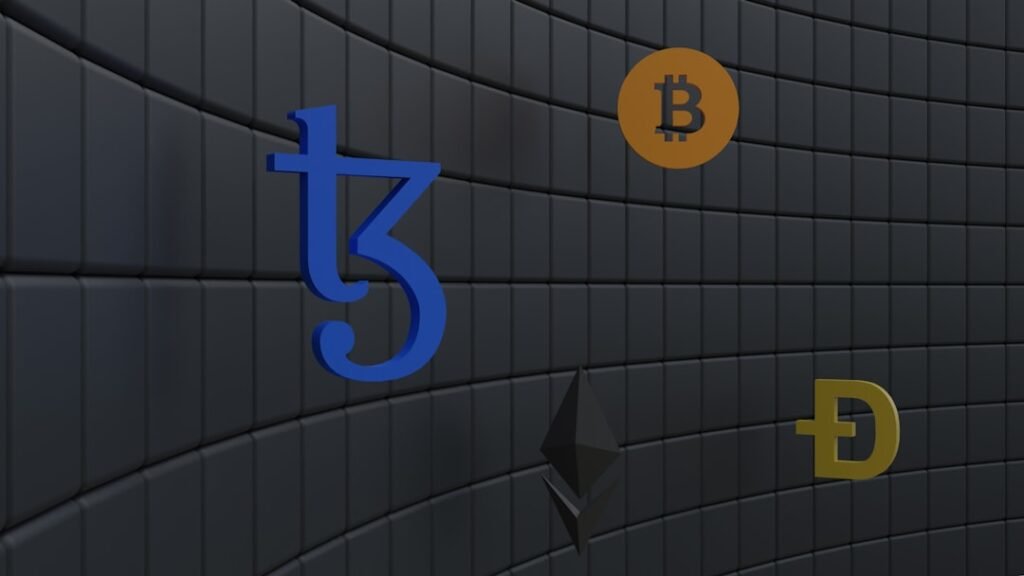How Layer 2 Solutions Are Solving Blockchain's Biggest Bottleneck
Ethereum shattered records in January 2024, processing over 2 million daily transactions. This explosion highlights blockchain's rapid expansion into decentralized finance (DeFi), non-fungible tokens (NFTs), and onchain gaming. Yet this success underscores a critical weakness: foundational Layer 1 (L1) blockchains like Ethereum and Bitcoin buckle under pressure, resulting in sluggish transactions and exorbitant fees during peak usage. This scalability crisis threatens to stall blockchain's global adoption. Enter Layer 2 (L2) scaling solutions – the technological breakthrough now processing 11–12 times more transactions than Ethereum itself. They unlock faster, cheaper access while preserving the bedrock security of underlying blockchains.
The Scalability Trilemma: Blockchain's Fundamental Challenge
At the heart of blockchain's congestion problem lies the "scalability trilemma." Developers struggle to simultaneously achieve three essential properties:
- 安全性: Ensuring transactions are tamper-proof and resistant to attack.
- 權力下放: Distributing control across many participants to prevent censorship.
- Scalability: Enabling the network to handle a high volume of transactions swiftly and cheaply.
L1 chains like Ethereum prioritize security and decentralization by design. Every transaction requires validation by a vast, decentralized network of nodes. This creates inherent bottlenecks:
- Limited Throughput: The network can only process a finite number of transactions per second (TPS).
- Congestion: When demand exceeds capacity, transaction queues form.
- High Fees: Users bid up transaction fees ("gas") to prioritize their actions.
- Slow Confirmations: Finalizing transactions takes longer.
L2 solutions directly tackle this trilemma by offloading the heavy computational lifting from the L1, enabling it to focus on security and decentralization while L2s handle scalability.
How Layer 2 Scaling Solutions Actually Work
L2s are protocols built 顶部 of existing L1 blockchains (like Ethereum or Bitcoin). They don't replace the L1; they augment it. Here's the core process:
- Transaction Bundling: Instead of processing every single transaction directly on the congested L1, L2s gather numerous transactions together off-chain.
- Off-Chain Processing: These bundled transactions are executed and validated within the L2's own environment. This is where the speed and cost savings are realized.
- Proof Generation & Submission: The L2 generates a cryptographic proof or a compressed summary of the results of all those bundled transactions.
- L1 Settlement & Security: This proof or summary is sent back to the L1 for final verification and permanent recording (settlement). The L1 acts as the ultimate arbiter of truth and security, accepting the L2's validated batch as a single, efficient transaction.
The Result: The L1 handles vastly less data, reducing congestion and fees. Users experience faster, cheaper transactions while benefiting from the underlying L1's robust security and decentralization.
The Main Types of Layer 2 Scaling Solutions
Different L2 architectures tackle scaling in distinct ways, each with unique strengths and trade-offs:
-
State Channels:
- How they work: Participants lock funds into a multi-signature smart contract (a "judge contract") on the L1. They then conduct numerous transactions directly between themselves off-chain by exchanging cryptographically signed messages. Only the final state (the net result of all interactions) is submitted back to the L1 when the channel is closed.
- 優點 Near-instant finality, extremely low fees for high-frequency interactions, enhanced privacy (transactions aren't public until settlement). Ideal for repeated transactions between fixed participants (e.g., micro-payments, gaming moves).
- 弊端: Requires participants to be online to transact, limited to pre-defined participants, initial setup can be complex/costly. Examples: Lightning Network (Bitcoin), Raiden Network (Ethereum).
-
Rollups (The Powerhouse Solution):
- How they work: Rollups execute transactions off-chain but post transaction data and a cryptographic proof of their validity back to the L1. This leverages the L1 for data availability and security. They "roll up" hundreds or thousands of transactions into a single L1 batch.
- Core Benefit: Massive scalability gains while inheriting L1 security. Supports complex smart contracts and general computation.
- Two Main Flavors:
- Optimistic Rollups: Assume transactions are valid by default. They rely on a "fraud proof" mechanism where anyone can challenge a transaction's validity within a dispute window. If unchallenged, transactions finalize. Faster, but slower finality due to challenge windows. Examples: Arbitrum, Optimism, Base.
- Validity Rollups (ZK-Rollups): Use advanced cryptography (like STARKs or SNARKs) to generate a "validity proof" for every batch of transactions submitted to the L1. This proof mathematically guarantees the correctness of all transactions in the batch. More secure, with near-instant finality. Examples: Starknet, zkSync, Polygon zkEVM, Scroll, Linea.
- Starknet Spotlight: A leading validity rollup achieving record-breaking sustained throughput, sub-cent fees, and 2-second confirmation times. Uniquely positioned for future Bitcoin settlement alongside Ethereum.
-
Sidechains:
- How they work: Independent blockchains running parallel to the L1, connected via a two-way bridge. Assets are locked on the L1 and minted equivalently on the sidechain. The sidechain has its own consensus mechanism and validators, operating under potentially different rules (e.g., higher speed, lower fees).
- 優點 Can offer significant speed and cost improvements, useful for testing new features or specific high-throughput use cases without burdening the L1.
- 弊端: Crucially, they DO NOT inherit the L1's security. Security depends entirely on the sidechain's own validators and bridge mechanisms, introducing a separate trust assumption. Requires significant resources to secure properly. Examples: Various application-specific chains (historically, some like Polygon PoS were considered sidechains, though Polygon now offers multiple solutions).
The Transformative Benefits of Layer 2 Scaling
L2 solutions directly address the pain points of L1 congestion:
- Massively Increased Throughput: By processing transactions off-chain and batching them, L2s dramatically increase the number of transactions the overall system can handle per second (TPS).
- Drastically Lower Transaction Costs: Bundling reduces the number of expensive interactions with the L1, slashing gas fees for end-users – often by orders of magnitude (e.g., cents instead of dollars).
- Faster Transaction Speeds: Near-instant finality (especially with Validity Rollups) enables real-time applications previously impossible on congested L1s.
- Maintained Security & Decentralization (for Rollups/Channels): Rollups and state channels crucially leverage the underlying L1 for ultimate settlement and security, preserving decentralization without reinventing the wheel. (Sidechains do not offer this benefit).
- Enhanced Privacy Potential: Certain L2 types, like state channels, keep transaction details private between participants until final settlement.
- Unlocking New Applications: Affordable micro-transactions, complex DeFi interactions, seamless onchain gaming, and efficient NFT trading become economically viable.
Real-World Impact: Where Layer 2s Shine
L2 scaling isn't theoretical; it's enabling practical use cases today:
- Payments: Solutions like Lightning Network enable instant, ultra-low-cost Bitcoin micropayments and streaming payments.
- Decentralized Exchanges (DEXs): L2-based DEXs offer trading experiences rivaling centralized exchanges in speed and cost, without custody risks.
- Onchain Gaming & NFTs: Complex blockchain games with frequent in-game actions and affordable NFT minting/trading flourish on L2s due to low fees and fast speeds.
- 分散式金融 (DeFi): Lending, borrowing, yield farming, and complex derivatives protocols become accessible to all users thanks to reduced gas costs on L2s. Platforms like Starknet host a growing ecosystem of DeFi dApps (like AVNU for liquidity, Ekubo for advanced AMMs).
Navigating Layer 2 Challenges and Solutions
While transformative, L2 adoption faces hurdles, with active solutions emerging:
| Challenge | 影響 | Emerging Solutions |
|---|---|---|
| Increased Complexity | Steeper learning curve for developers and users. | Improved developer tools (SDKs, documentation), user-friendly wallets (e.g., Braavos smart wallet), account abstraction simplifying interactions. |
| Security Trade-offs | While inheriting L1 security (rollups/channels), bridges and fraud proofs add potential attack surfaces. Sidechains have independent security. | Advancements in validity proof cryptography (e.g., STARKs), rigorous audits, formal verification, secure bridge designs. Validity rollups minimize trust assumptions. |
| Liquidity Fragmentation | Assets and users spread across multiple L2s can isolate liquidity pools. | Cross-chain bridges, interoperability protocols (like LayerZero, CCIP), shared liquidity networks, native L1 liquidity aggregation. |
| L1 Dependency | L2 performance and costs can still be impacted by L1 congestion/downtime. | Optimized data compression (e.g., calldata), dedicated data availability solutions, advances in proof efficiency. |
| Data Availability (DA) | Ensuring offchain transaction data remains accessible for verification is critical. | Dedicated DA layers (e.g., Celestia, EigenDA), data availability sampling (DAS), efficient onchain data storage solutions. |
| State Synchronization | Ensuring consistent state representation between L1 and L2 is vital. | Robust cross-chain messaging protocols, efficient state root commitments, fraud/validity proofs ensuring state correctness. |
| Fraud Resolution (Optimistic) | Optimistic rollups rely on effective fraud proofs and watchdogs. | Incentivized watchtower networks, optimized challenge periods, clear dispute resolution mechanisms. |
The Future of Layer 2 Scaling: Beyond the Horizon
L2 technology is rapidly evolving, promising even greater efficiency, usability, and integration:
- Hyper-Specialization: Expect L2s and Layer 3s (L3s built on L2s) optimized for specific industries or applications (e.g., high-frequency trading, real-time gaming, enterprise supply chains, privacy-focused social networks).
- Seamless Interoperability: Solving liquidity fragmentation through standardized protocols enabling frictionless communication and asset transfers between different L2s and L1s – creating a unified "modular" blockchain ecosystem.
- Advanced Proof Technology: Continued breakthroughs in validity proof systems (like STARKs) will enhance scalability, reduce computational costs, and enable sophisticated privacy features (e.g., proving transaction validity without revealing sensitive details).
- L2-First User Experience: As L2s mature, they will become the primary interaction layer for most users. L1s will increasingly act as ultra-secure settlement backbones, while users enjoy the speed and affordability of L2 execution.
- Hybrid Architectures: Combining the best elements of different L2 approaches (e.g., validity proofs with state channel-like speed for specific functions) for optimal performance.
- Enhanced Privacy: Integration of zero-knowledge proofs and other cryptographic primitives directly into L2 frameworks to provide stronger, user-controlled privacy options for transactions and data.
Conclusion: Scaling the Future, Securely
Layer 2 scaling solutions are no longer a speculative fix; they are the proven, operational answer to blockchain's crippling congestion. By offloading computation while anchoring security to robust L1s like Ethereum, L2s deliver the essential trifecta: scalability, affordability, and speed. Validity rollups, optimistic rollups, and state channels are already powering a new generation of dApps in DeFi, gaming, NFTs, and payments, making blockchain interaction feasible for millions.
While challenges around complexity, interoperability, and security nuances persist, the trajectory is clear and the solutions are actively being built. The evolution of L2 technology – driven by advancements in cryptography, interoperability standards, and specialized architectures – promises not just incremental improvements, but a fundamental transformation of the blockchain user experience. The future of scalable, decentralized applications runs on Layer 2. The question isn't if L2s will enable mainstream blockchain adoption, but how far 和 how fast they will propel the entire ecosystem forward.











